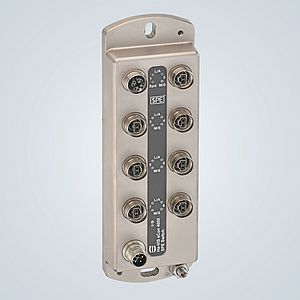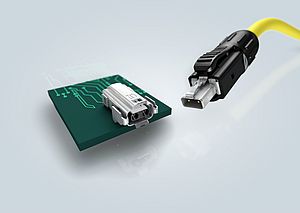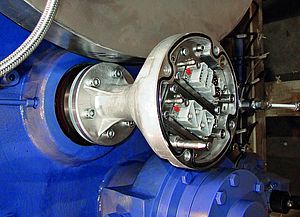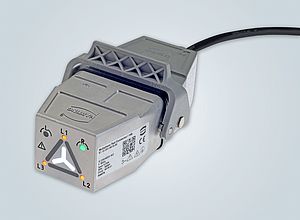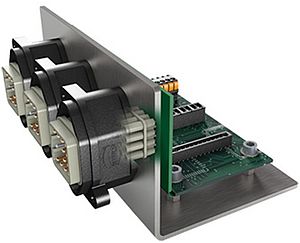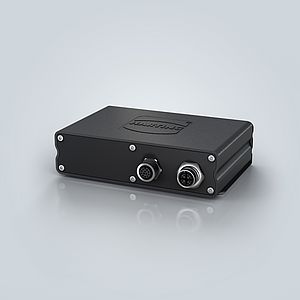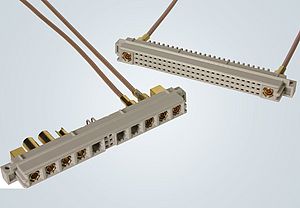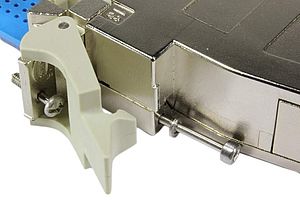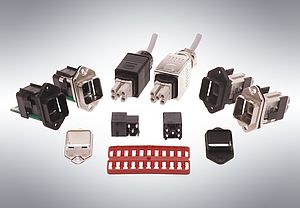IEN Europe: Mr. Harting, in the years 2005 to 2008, you were in charge of HARTING's subsidiary in Hong Kong as Managing Director Asia. Is China becoming, or is it already your most important market?
Mr. Harting: There is no doubt that China is a market of huge significance for HARTING - and it will remain so. We are now generating a quarter of our sales in China. In the periods when China was enjoying two-figure economic growth year-on-year, it was easier to boost sales but now these underlying conditions have changed. Today, new projects are much harder work. In other words, we adapt to our customers and our main aim now is to grow with technologically high-quality products. In this area, we still see growth potential for HARTING. This doesn't just apply to China, but to other Asian countries as well. We continue to keep an extremely close watch on Asia as a region.
IEN Europe: What is the main difference between the European and Asian markets?
Mr. Harting: Just as there are differences between the individual European countries, there are also differences between the various Asian markets. Let me make that clear by using two examples from my many years of experience. For example, Japanese customers are very innovation conscious and always demand 100% top quality and real customer added value. In terms of their expectations and quality standards, you can compare them with German customers. There is always a lengthy lead time when supplying Japanese customers - quite different from Chinese customers. With many projects here, there is often a need for rapid action, delivery must happen quickly and the lead time is significantly shorter. In my opinion, these two examples make it abundantly clear how different the challenges are for HARTING in the various individual countries. Of course, we are perfectly capable of satisfying all our Asian customers' expectations at any time.
IEN Europe: Your Han® connectors are produced in Germany, Romania and China. In the future, will the most economic manufacturing countries supply the whole world market?
Mr. Harting: There will not be a single HARTING site supplying the whole world market because we have adopted a quite different approach. It is an established part of our strategy that we produce where our customers are. That is what the long-term success of HARTING is based on. We are just now opening a new plant in Silao in Mexico and the Romanian site in Sibiu has recently been expanded. The advantages of this strategy for customers are obvious: short delivery channels and high availability - which in turn creates reliability and confidence. We are the only rectangular connector manufacturer in the world to produce identical products at different production sites around the globe. And we are justifiably proud of that.
IEN Europe: With Industry 4.0, protection against cyber attacks and data theft is becoming hugely significant. What do you see as the challenge for this industry? What is HARTING's contribution to that?
Mr. Harting: These days, machines are increasingly being networked, which raises the number of potential attack targets and this also affects the production sector. This is why, right at shop floor level, we need to address IT security. HARTING uses its own production facilities to learn and test new products and services, e.g. in the field of predictive maintenance. Machines must be networked here in order to create forecasts from the sensor data. For this, HARTING uses MICA, its new integrated industry computing platform. This functions as a smart connection between the shop floor and IT, with improved connectivity and the opportunity to process data right on the machine. MICA uses current IT technologies to encrypt communication and authenticate devices and features known as Linux containers to isolate and protect individual applications. Each application runs in its own 'sandbox'.
IEN Europe: Which is the special feature of your robust Linux-Micro-PC HARTING IIC MICA?Its hardware or its software?
Mr. Harting: The special feature of the MICA lies in its openness, both as regards the hardware and the software. MICA is an open platform consisting of a wide diversity of hardware and software modules which are ideally suited to each other. This creates a system with a wide variety of hardware interfaces, ranging from USB, RFID to Ethercat and even Profinet. In addition, there are also software applications known as Linux containers. This enables us to export the concept of 'visualisation' and containerisation' out of the computer centres right down to machine level. With these 'ready-to-go' containers, we can achieve new solutions far quicker than was ever thought possible before. The most varied types of container, including simple databases, simple web servers, OPC-UA, MQTT, visualisation and even Hadoop and 'R' form an open system from which customers, partners and individual developers can simply download the components they need.
IEN Europe: What feedbacks did you get from your presence at this year's HANNOVER MESSE? Which highlights did the press and industry visitors see at your stand?
Mr. Harting: The 'Etos' was undoubtedly the most eye-catching attraction at our trade-fair stand. This Rinspeed concept car is fitted with the HARTING IIC MICA, enabling independent emissions and status monitoring. We have also further developed and finessed our smart factory, the HAII4YOU Factory, as part of the FlexMiR research project. The project, which is funded by the Federal Ministry of Education and Research as part of the 'it's OWL' leading-edge cluster, focuses on the interactive programming of robots, among other things. In order to provide optimal support, KUKA's lightweight iiwa robots were integrated into the cells and incorporated into the control logic of the highly flexible production facility. These robots were kindly loaned to us by KUKA for the project.






